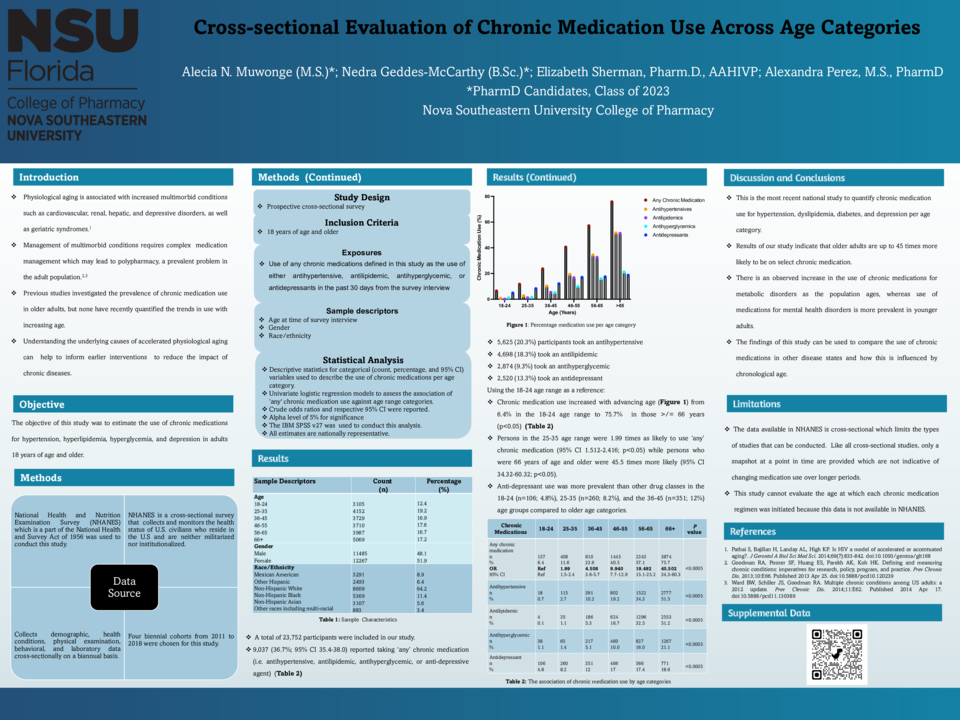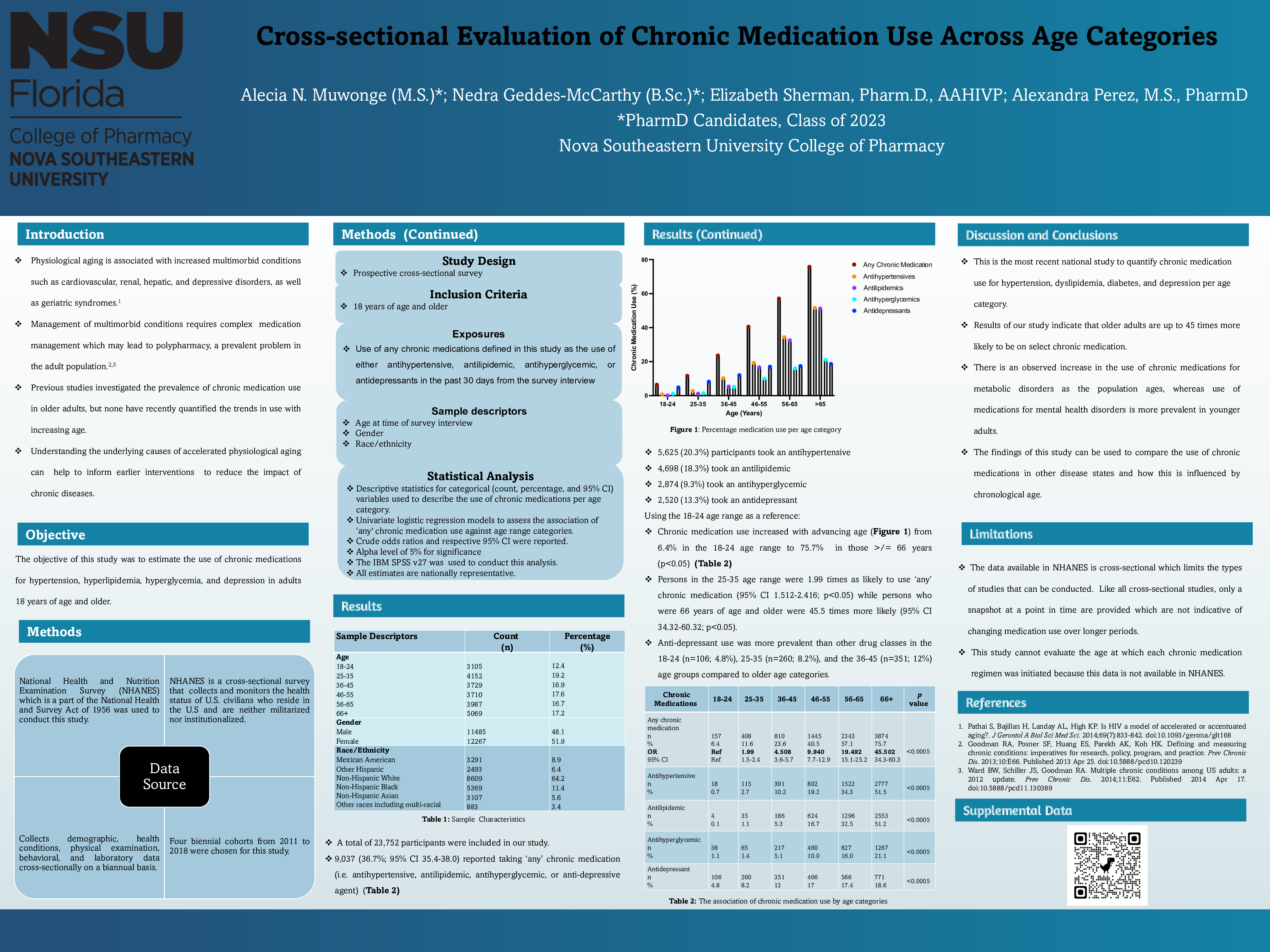Abstract
Purpose: The objective of this study was to estimate the use of chronic medications for hypertension, hyperlipidemia, hyperglycemia, and depression in adults over 18 years old.
Background: Aging is associated with increased multimorbid conditions. Management of multimorbid conditions can be complex, making polypharmacy a prevalent problem in the adult population. Previous studies investigated the prevalence of chronic medication use in older adults, but none have evaluated the trends in use with increasing age.
Methods: This retrospective cross-sectional study used general population data from NHANES during the 2011-2018 cohort years for a population of all adults 18 years of age and older. The primary exposure variable was the use of either an antihypertensive, antilipidemic, antihyperglycemic, or antidepressant at the time of the survey interview. Descriptive statistics for categorical variables were used to describe the use of chronic medications per age category. Univariate logistic regression models were developed to assess the association of ‘any' chronic medication use as the dependent variable and age range categories as the independent variable. Crude odds ratios and their respective 95% confidence intervals were reported. We used an alpha level of 5%.
Results: A total of 23,752 participants were included in our study. 9,037 (36.7%; 95% CI 35.4-38.0) reported taking ‘any’ chronic medications. 5,625 (20.3%) participants took an antihypertensive, 4,698 (18.3%) took an antilipidemic, 2,874 (9.3%) took an antihyperglycemic, and 2,520 (13.3%) took an antidepressant. Using the 18-24 age range as a reference, chronic medication use increased over time (p<0.0005). Persons in the 25-35 age range were 1.99 times as likely to use ‘any’ chronic medication (95% CI 1.512-2.416; p<0.05) while those 66 years of age and older were 45.5 times more likely (95% CI 34.32-60.32; p<0.05).
Conclusions: The results of our study indicate that chronic medication use increases significantly with increased age categories. There is an observed increase in the use of chronic medications for metabolic disorders as the population ages, whereas medications for mental health disorders are more prevalent in younger adults. The findings of this study can be used to compare the use of chronic medications in other disease states and how this is influenced by chronological age.






